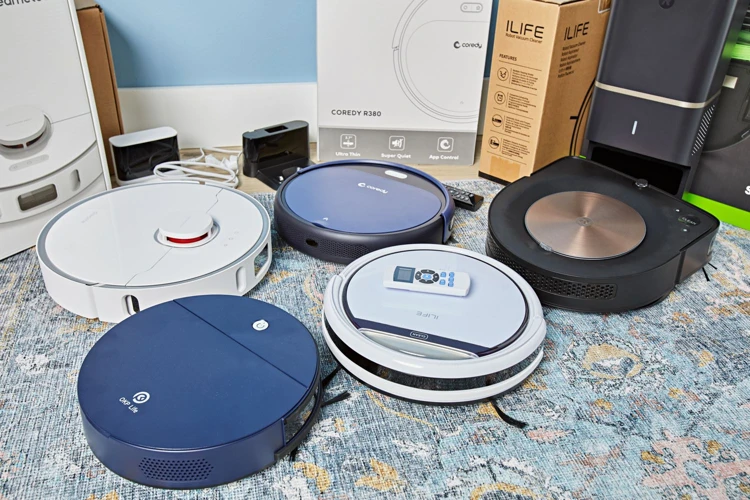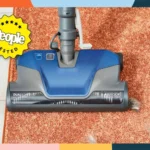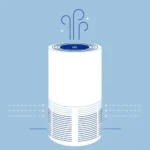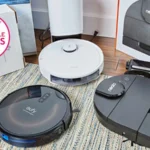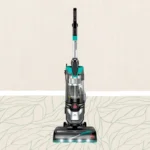It’s a beautiful day and you want to tackle the housework with your trusty smart vacuum cleaner. But, have you ever stopped to wonder what happens to all the dirt, dust, and allergens that your vacuum picks up? This is where Anti-Allergen Technology comes into play. With features like HEPA filters, cyclonic filtration, and UV-C light technology, your smart vacuum is capable of removing even the tiniest particles that can trigger allergies and asthma symptoms. In this article, we’ll explore the benefits of Anti-Allergen Technology and share tips for maintaining its effectiveness over time. So, let’s dive in and discover how to keep your smart vacuum cleaner working at its best!
What is Anti-Allergen Technology?

Many homeowners struggle with allergies or respiratory issues, making it difficult to keep a clean and healthy home. This is where anti-allergen technology comes into play. It’s a type of filtration system that is designed to capture and remove allergens from the air of your home. There are several different types of anti-allergen technology that your smart vacuum may use, including HEPA filters, cyclonic filtration, and UV-C light technology. In this article, we’ll explore each of these technologies in more detail and discuss why they are so important for those with allergies or respiratory issues.
HEPA Filters
HEPA (High-Efficiency Particulate Air) filters are one of the most important components of Anti-Allergen Technology in a smart vacuum cleaner. These filters capture microscopic particles as small as 0.3 microns with an efficiency rate of 99.97%.
So, what exactly does this mean?
Well, it means that these filters can trap a wide range of pollutants, including dust, pet dander, pollen, and even some bacteria and viruses.
To ensure that your smart vacuum cleaner’s HEPA filter works efficiently, it’s important to maintain it properly. Here are some tips for maintaining the HEPA filter:
- Clean or Replace Your Filter Regularly: Over time, the HEPA filter can become clogged with dirt and other particles. This can reduce its efficiency and lead to poor vacuum performance. To prevent this, you need to clean or replace your filter regularly. Check your vacuum’s manual for guidance on how often to do this.
- Use Genuine Replacement Filters: When purchasing replacement HEPA filters, make sure to use genuine parts. Knockoff filters may not be as efficient and can damage your vacuum.
- Do Not Wash the HEPA Filter: While it may seem like a good idea to wash the filter to remove dirt, this can actually damage it. HEPA filters are designed to trap particles in a specific way, and washing them can interfere with this process.
If you have allergies or asthma, investing in a smart vacuum cleaner with a HEPA filter can be a game-changer. It can significantly reduce the amount of airborne allergens in your home and improve your quality of life. However, it’s important to keep in mind that these vacuum cleaners can be more expensive than traditional ones.
To learn more about Smart Vacuum Cleaners and Anti-Allergen Technology, check out our article on /anti-allergen-tech-smart-vacs/. If you suffer from allergies or asthma and are considering a smart vacuum cleaner, you may find our article on /smart-vacuum-allergies-asthma/ helpful. And if you’re wondering about the cost of Smart Vacuum Cleaners with Anti-Allergen Technology, be sure to read our article on /smart-vacuum-anti-allergen-cost/.
Cyclonic Filtration
Cyclonic filtration is a type of anti-allergen technology that is commonly used in smart vacuum cleaners. It works by using powerful cyclones to separate dust, debris, and allergens from the air. This method of filtration is highly effective because it can capture particles as small as 0.3 microns, which is smaller than the size of many common allergens.
How Cyclonic Filtration Works
Cyclonic filtration uses a series of cylindrical chambers that are arranged in a vertical stack. Each chamber has a cone-shaped bottom and a top that is open to the chamber above it. The chambers are connected by tubes that spiral around the outside of the stack. When air enters the stack, it is forced to spiral around the chambers, creating a powerful cyclonic force that separates the particles from the air.
The Benefits of Cyclonic Filtration
Cyclonic filtration is an effective way to remove allergens from the air because it can capture particles that are too small for traditional filters to capture. Cyclonic filtration is more efficient than traditional filters because it does not clog as easily. This means that the vacuum cleaner can maintain its suction power even as it fills up with dust and debris.
Maintaining Your Cyclonic Filtration System
To keep your smart vacuum cleaner’s cyclonic filtration system working effectively, it is important to clean the dustbin and replace the filters regularly. Table below outlines the recommended maintenance schedule for cyclonic filtration:
| Maintenance Task | Frequency |
|---|---|
| Clean dustbin | After every use |
| Replace filter | Every 6 to 12 months |
| Check for blockages | As needed |
By following this maintenance schedule, you can keep your smart vacuum cleaner’s cyclonic filtration system working effectively and reduce the amount of allergens in your home.
UV-C Light Technology
One of the innovative technologies that many smart vacuum cleaners feature is UV-C light technology. This technology uses ultraviolet light to kill bacteria, viruses, and other microorganisms that could cause allergies or other illnesses. By destroying these microorganisms, UV-C light technology significantly reduces the likelihood of allergy symptoms, especially for people with highly sensitive immune systems.
How does UV-C light technology work?
UV-C light technology works by emitting a specific type of ultraviolet light that’s exceptionally effective at killing microorganisms. This particular type of ultraviolet light has a wavelength between 100 and 280 nanometers, which is shorter than the wavelength of visible light. When these UV-C rays come into contact with a microorganism, they destroy its nucleic acid, preventing its ability to replicate and continue spreading.
What are the benefits of UV-C light technology?
There are plenty of benefits of UV-C light technology, especially for people who suffer from allergies or have a weak immune system. Here are some of them:
- Efficient sterilization: UV-C light technology is highly effective at killing microorganisms in your home. It can sterilize your bedding, your carpets, your upholstery, and any other surface that you run your smart vacuum cleaner over. This technology can reduce the number of allergens in your home by up to 99.9%.
- Chemical-free: UV-C light technology does not involve the use of any chemicals, so it’s safe for use around children and pets. It also doesn’t leave behind any residue that could cause further allergies or respiratory problems.
- Easy to use: UV-C light technology is easy to use because it’s built right into most smart vacuum cleaners. Users don’t have to make any extra effort or spend any extra time trying to sanitize their home. All they have to do is turn on their smart vacuum cleaner and let it do the work.
How to maintain UV-C light technology?
Maintaining UV-C light technology is relatively easy. Here are some of the things you should do to ensure that your smart vacuum cleaner’s UV-C light technology lasts for a long time:
- Replace the bulbs: UV-C bulbs have a limited lifespan of roughly 6 to 12 months. To maintain the efficiency of the technology, it’s essential to replace the bulbs when they burn out.
- Clean the sensors: UV-C sensors can sometimes become dirty, which can impede their effectiveness. Cleaning the sensors with a clean, damp cloth can help ensure that the technology works correctly.
Conclusion
UV-C light technology is a fantastic way to keep your home safe and free from allergens. It’s effective, chemical-free, and easy to use. With proper maintenance, you can keep this technology working optimally for years to come.
Why is Anti-Allergen Technology Important?
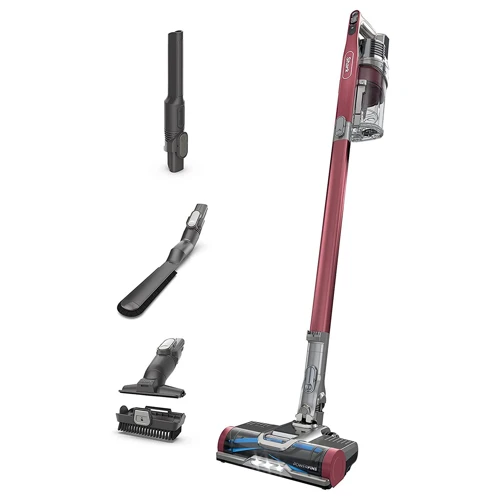
The importance of anti-allergen technology in a smart vacuum cleaner cannot be overstated. Allergens, such as pet dander, dust mites, and pollen, can cause a number of health problems such as allergies, asthma, and respiratory infections. By investing in a smart vacuum cleaner with anti-allergen technology, you can significantly reduce the amount of allergens in your home.
HEPA Filters are a common type of filter that can capture small particles such as dust, pollen, and pet dander. They are designed to capture at least 99.97% of particles that are 0.3 microns or larger. This is important because many allergens are this size or smaller. By capturing them, you prevent them from being released back into the air.
Cyclonic filtration is another type of anti-allergen technology that can be found in some smart vacuum cleaners. This technology uses high-powered suction to force air and debris through a series of cyclones. The cyclones spin at high speeds, separating larger debris from smaller particles. The smaller particles are then trapped in a filter or bin, leaving the air cleaner.
UV-C light technology is a newer type of anti-allergen technology that can be found in some smart vacuum cleaners. UV-C light is a type of ultraviolet light that is germicidal, meaning it can kill bacteria, viruses, and other microorganisms. By using UV-C light technology, smart vacuum cleaners can kill germs, bacteria, and viruses that can cause allergies and other health problems.
Investing in a smart vacuum cleaner that utilizes anti-allergen technology can help improve the air quality in your home, reduce the amount of allergens in the air, and help prevent health problems caused by allergens. By choosing a vacuum cleaner with HEPA filters, cyclonic filtration, or UV-C light technology, you can significantly improve the health and wellbeing of you and your family.
Maintaining Your Smart Vacuum Cleaner’s Anti-Allergen Technology
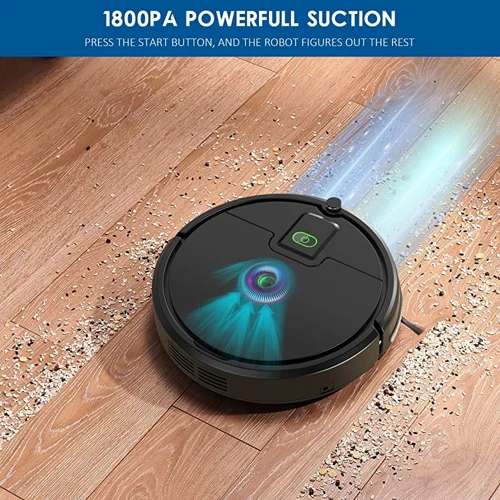
As we know, smart vacuum cleaners with anti-allergen technology have become increasingly popular due to their ability to remove harmful particles like dust, pet dander, and pollen from the air. However, to maintain the effectiveness of these features, it is crucial to follow proper maintenance techniques. Without regular attention, allergens will accumulate and become ineffective. In this section, we will explore how you can maintain your smart vacuum cleaner’s anti-allergen technology to ensure that it continues to function optimally.
Clean and Replace Filters Regularly
When it comes to maintaining the anti-allergen technology in your smart vacuum cleaner, one of the most fundamental steps is to clean and replace filters regularly. Over time, filters can become clogged with dust, dirt, and other particles, reducing their effectiveness at capturing allergens. Here are some tips for keeping your filters in tip-top shape:
- Check for Replaceable Filters: First, check your vacuum’s user manual to determine if it has any filters that can be replaced. If it does, purchase replacement filters from the manufacturer or a reputable retailer.
- Remove and Clean Non-Replaceable Filters: If your vacuum has filters that cannot be replaced, such as washable HEPA filters, remove them and clean them according to the manufacturer’s instructions. Generally, this involves rinsing the filter with water and allowing it to air dry completely before reinstalling it.
- Clean Filters Frequently: To prevent allergens from building up in your vacuum’s filters, clean them at least once a month or more frequently if you have pets or people in your household with allergies or respiratory issues.
- Inspect Filters Regularly: Inspect your vacuum’s filters regularly for signs of damage or wear, and replace them if they are torn, frayed, or discolored.
By following these simple steps, you can help ensure that your smart vacuum cleaner’s filters are working at their best to capture allergens and improve the air quality in your home.
Empty the Dustbin Frequently
One important aspect of maintaining the anti-allergen technology in your smart vacuum cleaner is to keep the dustbin empty. The dustbin is the part of the vacuum cleaner that holds all the dust and debris that has been picked up from your floors and carpets. When the dustbin becomes full, it can cause the vacuum cleaner to lose suction power, which can lead to less effective cleaning. Additionally, a full dustbin can also cause allergens to be released back into the air, which can cause allergies and other respiratory problems for those with sensitivities.
To ensure that your smart vacuum cleaner is performing at its best, it is recommended to empty the dustbin after each use, or as needed depending on how much debris is picked up during each cleaning cycle. This will prevent the dustbin from becoming overloaded and reduce the risk of allergens being released back into the air.
When emptying the dustbin, it is important to do so in a manner that minimizes the release of dust and other allergens. To do this, it is recommended to empty the dustbin outside or into a trash bag that can be tied shut to prevent any dust from escaping. Additionally, you can use a damp cloth or microfiber cloth to wipe down the interior of the dustbin to remove any remaining dust or debris.
By following these tips and emptying the dustbin frequently, you can help to maintain the anti-allergen technology in your smart vacuum cleaner and improve the overall air quality in your home. Remember, prevention is key when it comes to allergens, and taking these small steps can make a big difference in reducing allergens and improving your health.
Check for Blockages and Clogs
It’s important to check your smart vacuum cleaner for any blockages or clogs, as these can impact its ability to efficiently filter allergens. Here are some steps you can take to ensure there are no blockages or clogs in your vacuum:
- Turn off the vacuum: First thing’s first, make sure the vacuum is turned off and unplugged before you start checking for blockages or clogs.
- Remove the dustbin: Carefully remove the dustbin from the vacuum and inspect it for any blockages or clogs. If you notice any, remove the blockages with a tool like a brush or a cloth.
- Inspect the hose: Next, inspect the hose for any blockages or clogs. You can do this by detaching the hose from the vacuum and looking through it. If you notice any blockages, carefully remove them with a tool or your fingers.
- Check the brush roll: The brush roll can also be a breeding ground for allergens and debris. Inspect it for any tangles or blockages and remove them with a tool or your fingers.
- Clear the airways: Finally, check the airways for any clogs and remove them. Make sure to double-check that there are no remaining blockages or clogs before reassembling your vacuum.
By regularly checking for blockages and clogs, you can ensure that your smart vacuum cleaner is running at its best and properly filtering allergens from your home.
Replace UV-C Bulbs
Maintaining the UV-C light technology in your smart vacuum cleaner is crucial in ensuring the dust and allergens in your home are effectively eliminated. The UV-C light technology emits ultraviolet light rays that penetrate the cell walls of microorganisms, making them unable to reproduce and effectively killing them. To keep your smart vacuum cleaner functioning properly, it is important to routinely replace the UV-C bulbs. Here are some steps to follow for replacing the UV-C bulbs:
- Step 1: Check the user manual for specific replacement instructions and the recommended replacement schedule for the UV-C bulbs of your smart vacuum cleaner.
- Step 2: Unplug your vacuum cleaner to prevent any electrical accidents or injuries.
- Step 3: Locate the UV-C bulbs in your vacuum cleaner. They are typically found in the canister or near the brush roll of the vacuum.
- Step 4: Carefully remove the old UV-C bulb from its socket. Some bulbs may simply require twisting or pulling, while others may need to be unscrewed.
- Step 5: Insert the new UV-C bulb into the socket carefully, making sure not to force it, as it may break the glass.
- Step 6: Reassemble your vacuum cleaner correctly, ensuring that all parts are secure.
- Step 7: Turn on your vacuum cleaner to check if the new UV-C bulbs are functioning properly.
- Step 8: Dispose of the old UV-C bulbs in accordance with the local regulations; some communities require them to be recycled to prevent environmental hazards.
By following these simple steps, you can ensure that your smart vacuum cleaner’s UV-C light technology is functioning at its best, ensuring that your home stays clean and free of allergens. Now that you know how to replace your UV-C bulbs, you can enjoy a cleaner and healthier home.
Clean Brushes and Rollers
Keeping your smart vacuum cleaner’s brushes and rollers clean is also crucial for maintaining its anti-allergen technology. These components come into direct contact with the floors and carpets in your home, so they can quickly accumulate dust, pollen, pet hair, and other allergens.
To clean the brushes and rollers, first, unplug the vacuum cleaner and turn it over. Then, remove any visible debris from the brushes and rollers, such as hair or thread. Next, use a pair of scissors or a seam ripper to cut away any tangled fibers that have wrapped around the brushes or rollers. Be sure to handle the blades carefully to avoid injury.
After removing visible debris and tangled fibers, use a soft-bristled brush or a pick to loosen and remove any remaining dirt or dust particles. Be sure to wear gloves and a mask to protect yourself from breathing in any airborne allergens.
Once you’ve thoroughly cleaned the brushes and rollers, check for any signs of wear or damage. If the brushes or rollers are worn or damaged, they may need to be replaced. Refer to your vacuum cleaner’s manual for instructions on how to replace these components.
Regularly cleaning your smart vacuum cleaner’s brushes and rollers can help ensure that it continues to effectively remove allergens from your home. It can also help extend the lifespan of these components, saving you money in the long run.
Other Tips for Reducing Allergens in Your Home
If you have a smart vacuum cleaner with advanced anti-allergen technology, you’re already taking great steps towards reducing the allergens in your home. However, there are other steps you can take to further reduce allergens and create a healthier living environment.
Regular Dusting and Cleaning
Regular dusting and cleaning can help to remove allergens from surfaces in your home. Use a damp cloth or microfiber cloth to wipe down surfaces and trap allergens.
Washing Bedding and Curtains
Bedding and curtains can harbor allergens like dust mites, so it’s important to wash them regularly. Use hot water and high heat settings in the dryer to kill off any allergens.
Reducing Humidity Levels
Allergens like mold and dust mites thrive in humid environments, so reducing humidity levels can help to control them. Use a dehumidifier in damp areas of your home or consider installing a ventilation system.
Keeping Pets Clean
Pets can carry allergens like dander and fur, so it’s important to keep them clean. Regular grooming and bathing can help to reduce allergens in your home.
Using Air Purifiers
Air purifiers can help to remove allergens from the air in your home. Look for purifiers with HEPA filters, which can capture tiny particles like pet dander and pollen.
By incorporating these tips into your cleaning routine, you can reduce allergens in your home and create a healthier living environment. Remember to also follow the steps for maintaining your smart vacuum cleaner’s anti-allergen technology to ensure it continues to work effectively.
Conclusion
In conclusion, maintaining the anti-allergen technology in your smart vacuum cleaner is crucial for keeping your home free from allergens that can harm your health. By using HEPA filters, cyclonic filtration, and UV-C light technology, you can create a healthier environment in your home.
Regular maintenance of your vacuum is necessary to ensure it is working at its full potential. Remember to clean and replace filters regularly, empty the dustbin frequently, check for blockages and clogs, replace UV-C bulbs, and clean brushes and rollers. These simple actions can significantly reduce the amount of allergens in your home and keep your vacuum running smoothly.
Aside from maintaining your vacuum, there are other tips you can follow to reduce allergens in your home. Always keep your floors and surfaces clean and dust-free, wash bedding and linens regularly, use air purifiers, and keep pets well-groomed.
Incorporating these steps into your cleaning routine will not only benefit those with allergies and respiratory problems but also lead to a cleaner and more hygienic home overall.
At the end of the day, investing in a smart vacuum cleaner with anti-allergen technology and taking care of it properly is a smart move for anyone wanting to maintain a healthy and safe home.
Frequently Asked Questions
What is the difference between HEPA filters and cyclonic filtration?
HEPA filters capture small particles like pollen and pet dander. Cyclonic filtration separates dirt and debris from the air. Some vacuums use both technologies for maximum efficiency.
How does UV-C light technology work in vacuums?
UV-C light technology can kill bacteria and viruses that are too small to be trapped by filters, helping to reduce allergens in your home.
Why is it important to maintain anti-allergen technology in my smart vacuum cleaner?
Maintaining anti-allergen technology ensures that your vacuum is working at its full potential, capturing and removing allergens from your home. Neglecting maintenance can result in decreased suction and ineffective filtration.
How often should I clean and replace my vacuum’s filters?
It is recommended to clean or replace your vacuum filters every 3-6 months, depending on usage. Check your vacuum’s manual for specific recommendations.
What should I do if my vacuum’s dustbin is full?
Empty the dustbin into a trash bag outside or sealable container, and dispose of properly. Do not empty the dustbin inside your home as the allergens can become airborne.
How can I tell if my vacuum has a blockage or clog?
If your vacuum starts to lose suction or make strange noises, it could be a sign of a blockage or clog. Check your vacuum’s hoses and attachments for any visible obstructions.
How often should I replace my vacuum’s UV-C bulbs?
UV-C bulbs typically last up to 10,000 hours of use. Check your vacuum’s manual for specific recommendations and instructions on bulb replacement.
Why is it important to clean my vacuum’s brushes and rollers?
Brushes and rollers can become clogged with hair and debris, reducing suction and preventing proper filtration. Regular cleaning can ensure your vacuum is working efficiently.
Can using a smart vacuum cleaner reduce allergens in my home?
Yes, smart vacuum cleaners with anti-allergen technology can effectively capture and remove allergens from your home, helping to improve the air quality and reduce allergy symptoms.
What are some other tips for reducing allergens in my home?
Other tips include regular dusting and vacuuming, using allergy-proof bedding and pillow covers, and keeping pets groomed and bathed regularly.
